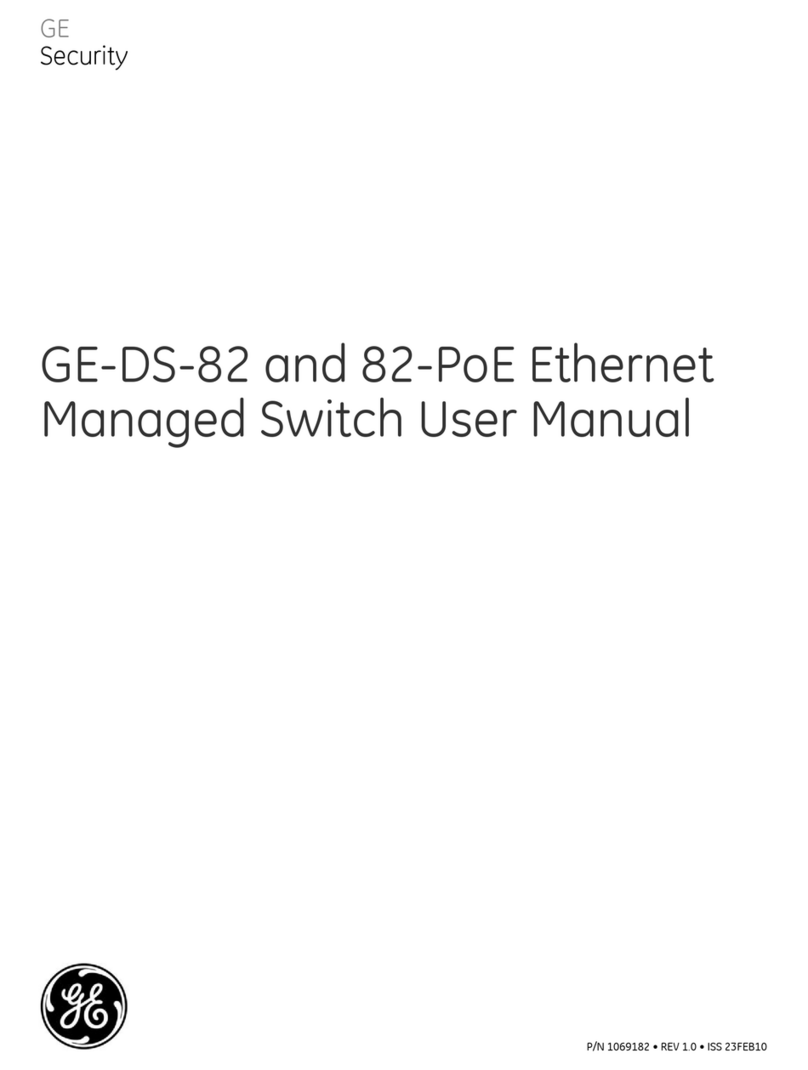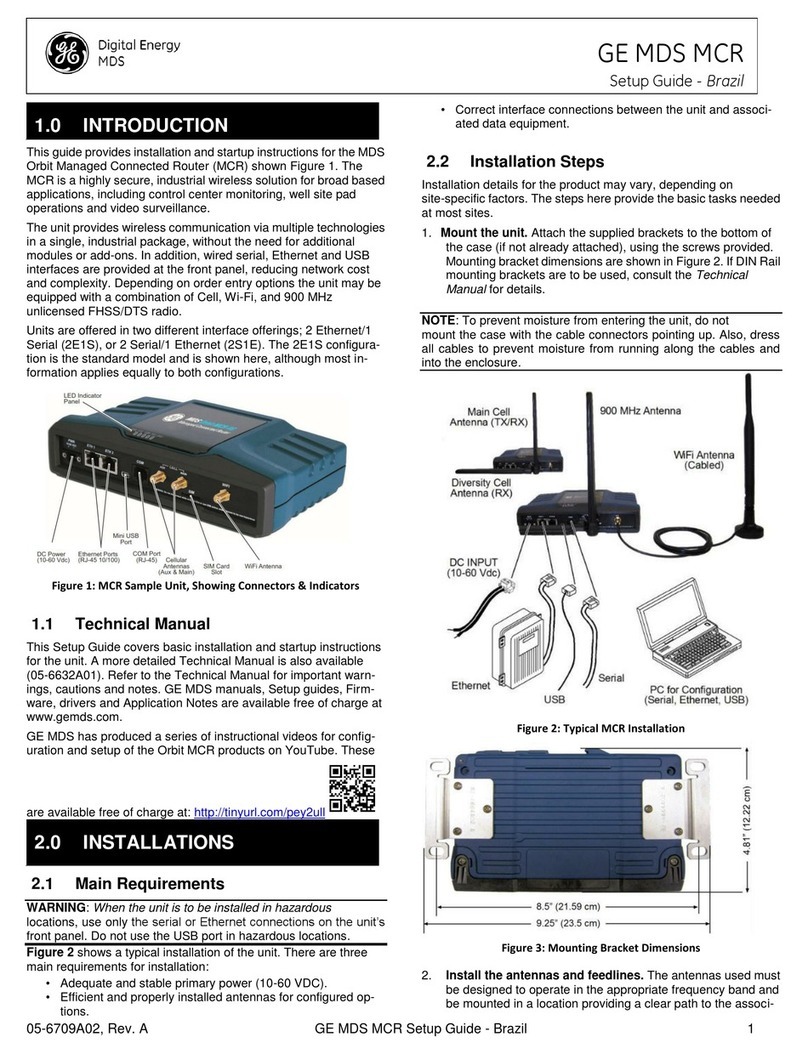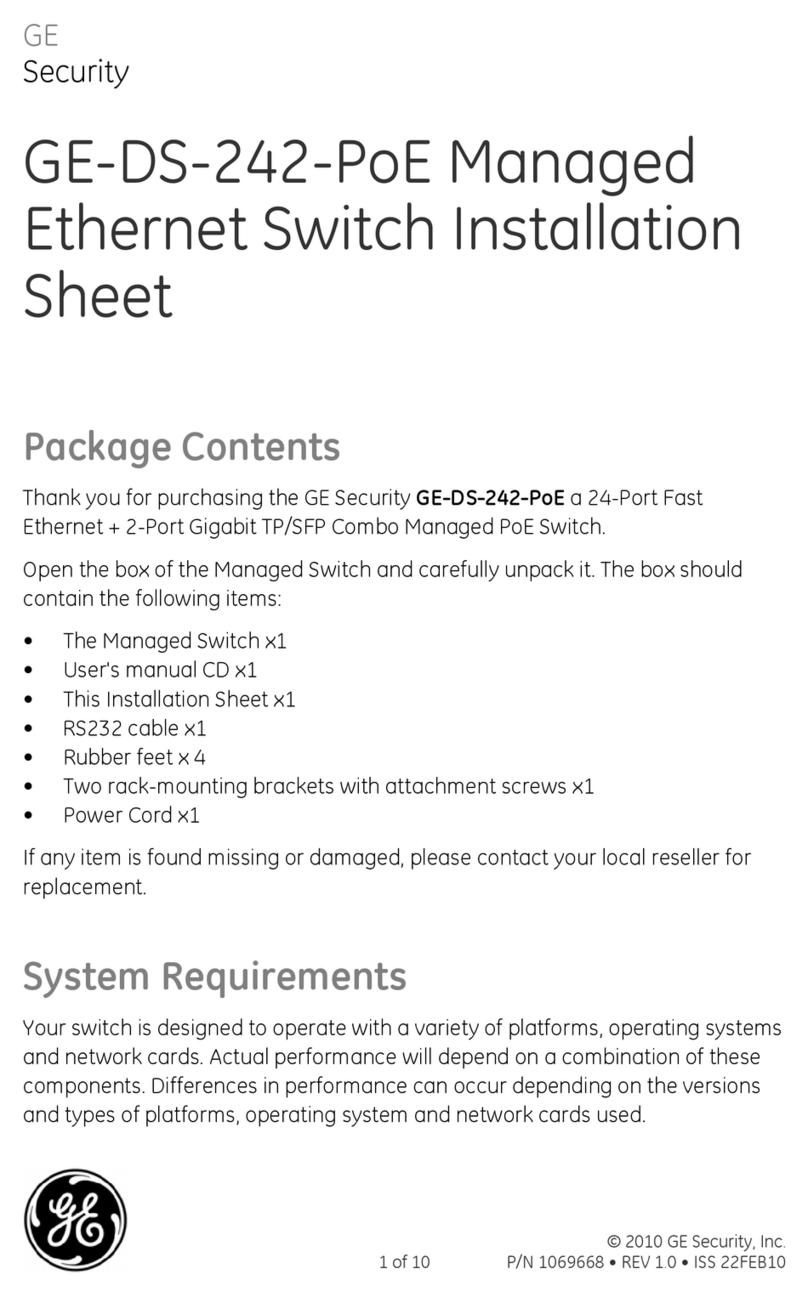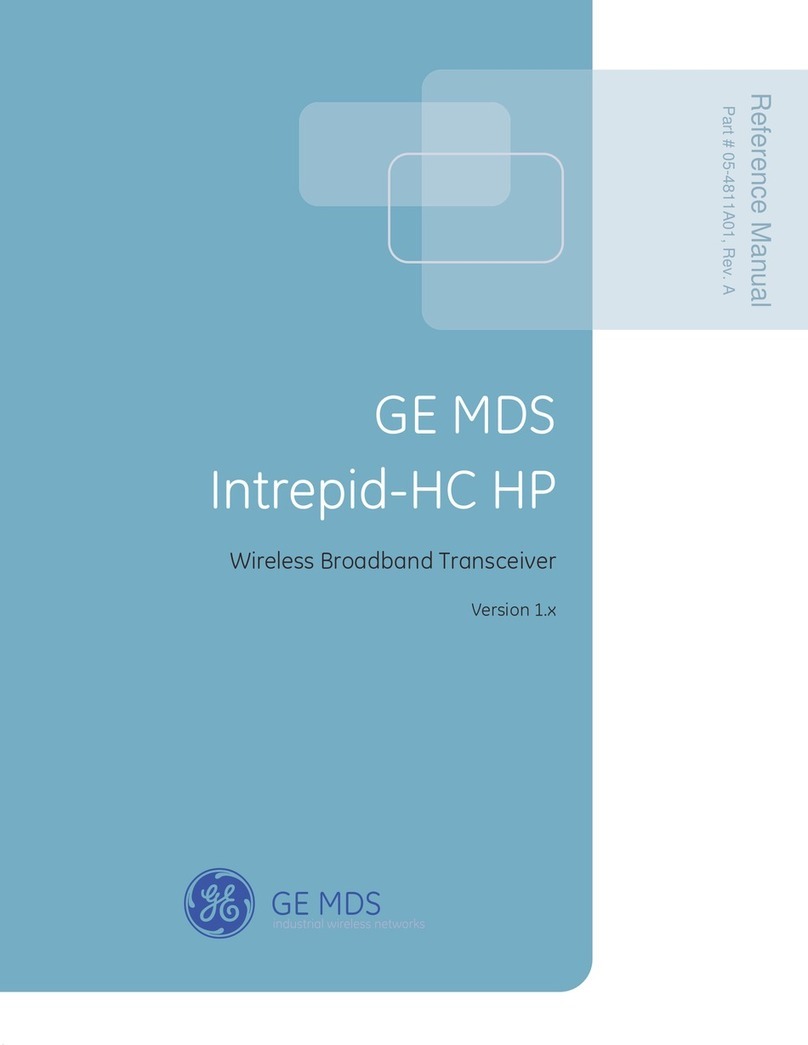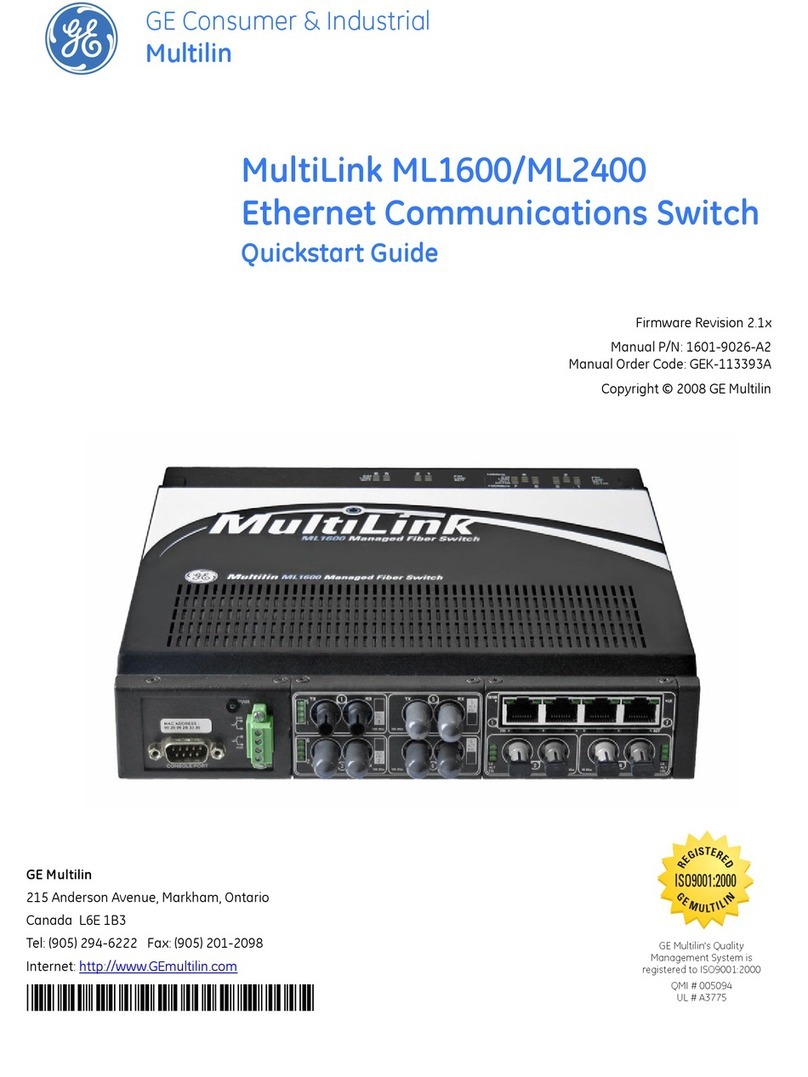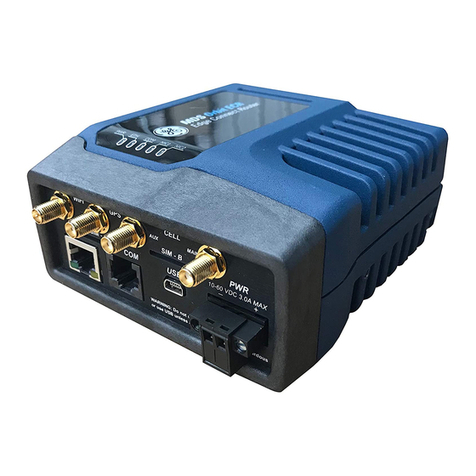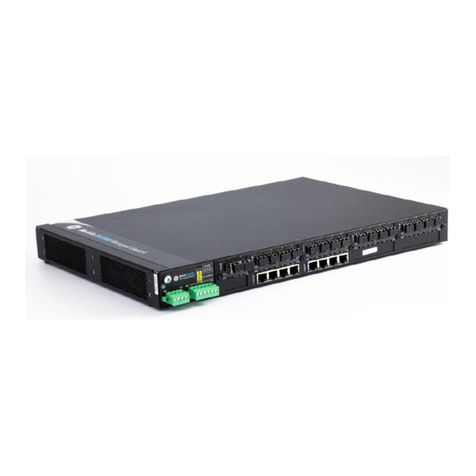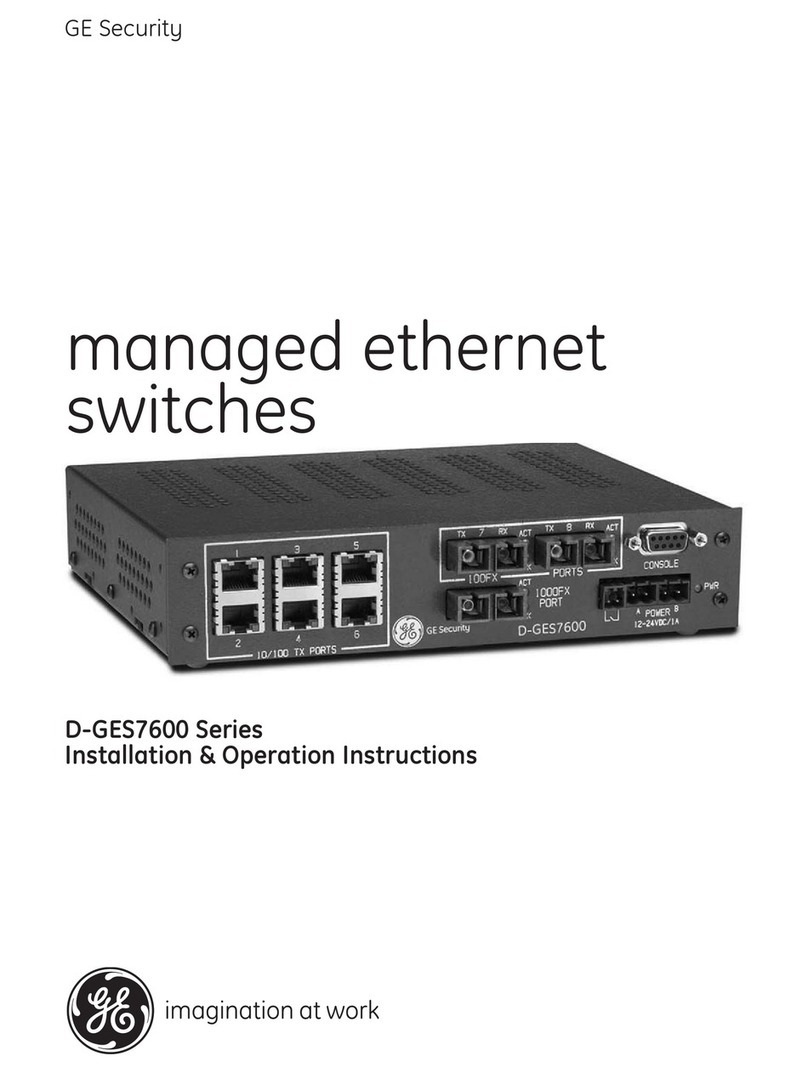
TOC TABLE OF CONTENTS
MULTILINK ML1600 ETHERNET COMMUNICATIONS SWITCH – INSTRUCTION MANUAL TOC–I
Table of Contents
1: INTRODUCTION GETTING STARTED ............................................................................................................. 1-1
INSPECTING THE PACKAGE AND PRODUCT ........................................................................1-1
ORDERING ........................................................................................................................... 1-2
ORDER CODES .......................................................................................................................1-2
SPECIFICATIONS .................................................................................................................1-3
TECHNICAL SPECIFICATIONS ................................................................................................1-3
ENVIRONMENTAL SPECIFICATIONS ......................................................................................1-5
PHYSICAL SPECIFICATIONS ...................................................................................................1-5
APPROVALS AND WARRANTY ..............................................................................................1-5
SOFTWARE OVERVIEW ..................................................................................................... 1-6
COMMAND LINE SOFTWARE ................................................................................................1-6
ENERVISTA SOFTWARE ......................................................................................................... 1-6
BEFORE STARTING .................................................................................................................1-7
COMMAND LINE INTERFACE SOFTWARE ..................................................................... 1-8
CONSOLE CONNECTION .......................................................................................................1-8
CONSOLE SETUP .................................................................................................................... 1-8
CONSOLE SCREEN .................................................................................................................1-9
LOGGING IN FOR THE FIRST TIME ....................................................................................... 1-9
AUTOMATIC IP ADDRESS CONFIGURATION .......................................................................1-9
SETTING THE IP PARAMETERS .............................................................................................1-10
PRIVILEGE LEVELS ..................................................................................................................1-12
USER MGMNT ......................................................................................................................1-12
HELP ........................................................................................................................................ 1-13
EXITING ................................................................................................................................... 1-15
ENERVISTA SECURE WEB MGMNT ................................................................................. 1-16
LOGGING INFOR THE FIRST TIME .......................................................................................1-16
PRIVILEGE LEVELS ..................................................................................................................1-17
USER MGMNT ......................................................................................................................1-17
MODIFYING THE PRIVILEGE LEVEL ......................................................................................1-20
HELP ........................................................................................................................................ 1-20
EXITING ................................................................................................................................... 1-21
ML1600 SOFTWARE UPDATES ........................................................................................ 1-22
UPDATING MULTILINK SOFTWARE .....................................................................................1-22
SELECTING THE PROPER VERSION ......................................................................................1-22
UPDATING THROUGH THE COMMAND LINE ....................................................................... 1-22
UPDATING THROUGH THE ENERVISTA SOFTWARE ...........................................................1-23
2: PRODUCT
DESCRIPTION
OVERVIEW ............................................................................................................................ 2-1
INTRODUCTION TO THE ML1600 ....................................................................................... 2-1
DESIGN ASPECTS ...................................................................................................................2-2
COMMUNICATIONS MODULES ....................................................................................... 2-3
FOUR-PORT MODULES .........................................................................................................2-3
SIX-PORT MODULES ..............................................................................................................2-4
EIGHT-PORT MODULES .........................................................................................................2-4
GIGABIT (1000 MBPS) MODULES ......................................................................................2-5
FEATURES AND BENEFITS ................................................................................................ 2-6
PACKET PRIORITIZATION, 802.1PQOS .............................................................................2-6
FRAME BUFFERING AND FLOW CONTROL ......................................................................... 2-6
MULTILINK SWITCH SOFTWARE ..........................................................................................2-6






